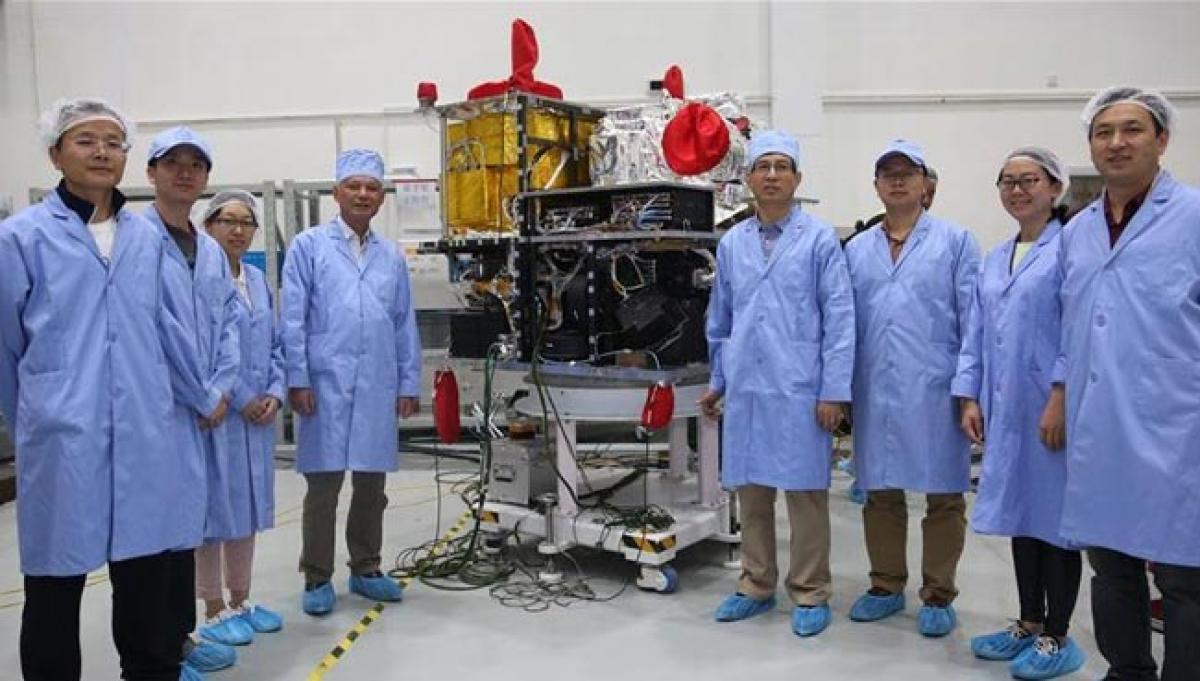Live
- Share of top 50 stocks to total market cap at all-time low: Report
- Nortje ruled out of SA’s remaining white-ball matches against Pakistan
- Mamata doesn't want INDIA bloc to succeed, claims BJP's Rahul Sinha
- Air India Express cancels flights at Chennai airport due to deluge
- Kejriwal promises Rs 2,100 for Delhi women if AAP wins polls, BJP takes ‘lollipop’ jibe
- JPC Chairman supports Assam govt's 'No NRC, No Aadhaar,' rule
- Stoinis vows to revive Melbourne Stars’ glory with fresh leadership
- DDA easing freehold conversion of shops: MoS Sahu
- CP Sudheer Babu Updates on Manchu Family Cases
- Keerthy Suresh Marries Long-time Friend Antony Thattil in Goa
Just In

The 1.65 kg Galassia nano-satellite, built by researchers at the National University of Singapore (NUS), carried a science payload of the size of a shoe box containing the basic components used in quantum communication and computing.
Bengaluru: China made big news this week with the launch of its QUESS satellite that will test for the first time the viability of quantum technology for secure communications over long distances.
But the credit for first proving that this novel technology really works in space may rightly belong to tiny Singapore and in a way India can take pride in having helped the city-state demonstrate this capability.
The 1.65 kg Galassia nano-satellite, built by researchers at the National University of Singapore (NUS), carried a science payload of the size of a shoe box containing the basic components used in quantum communication and computing.
Galassia was one of six Singapore satellites that were launched by India's Polar Satellite Launch Vehicle in December 2015.
The compact device, dubbed "Small Photon-Entangling Quantum System (SPEQS)" contains a laser diode, crystals, mirrors and photon detectors. It creates pairs of light particles called photons and measures the pair's properties all on board the satellite.
According to the University website, analysis of data from the satellite "shows that SPEQS is making pairs of photons with correlated properties", an indication the device is performing as expected in orbit. The findings were reported in May 2016 in the peer-reviewed journal Physical Review Applied.
"This is the first time anyone has tested this kind of quantum technology in space," Alexander Ling, Principal Investigator at the university's Centre for Quantum Technologies told IANS in an email. It's a major experimental milestone towards a space-based global quantum network, he said.
"The QUESS satellite relies on the same type of light source we placed on Galassia," Ling said. "QUESS, however, is also equipped with telescopes for beaming the photons away from the spacecraft to a ground station. This will be a great technical achievement if accomplished."
According to Singapore researchers, Galassia has fulfilled their first objective "to develop the techniques for assembling the optics necessary for a space-capable photon pair source that could in the future be rapidly converted to produce polarisation-entangled photon pairs."
Described by Albert Einstein as "action at a distance", entanglement is a connection between quantum particles that lends security to communication and power to computing.
With later satellites, the Singapore researchers will try sending "entangled" photons to Earth and to other satellites towards establishing a space-based quantum network.
According to the NUS website, the team is working with standard "CubeSat" nano-satellites that can get relatively cheap rides into space, ultimately completing a global network of satellites in orbit and an array of ground stations for quantum communications. Nano-satellites are typically launched piggy-back with conventional large spacecraft, keeping the launch costs low.
By K.S. Jayaraman
(The author can be contacted at [email protected])

© 2024 Hyderabad Media House Limited/The Hans India. All rights reserved. Powered by hocalwire.com







